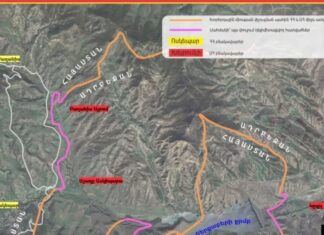The Annual Threat Assessment of the US Intelligence Community of February 5, 2024 was recently published by the US state agencies. The report gives a clear understanding of how the US intelligence community sees the current state of affairs, which countries are deemed to be geopolitical rivals of the US, and regional issues that have the potential of having an impact on a global scale as well as functional and transnational challenges, e.g. proliferation, emerging technology, climate change. Terrorism, etc. The following article will focus on analyzing the parts of the report dedicated to US geopolitical rivals, the current state of international relations, as well as Armenian-Azerbaijani relations.
The report indicates that the United States is facing an “increasingly fragile global order.” This comes as no surprise because since the end of the Cold War, which concluded with the United States becoming the only superpower, a lot has changed, and increasingly more countries are challenging the United States. The main geopolitical rivals of the United States as of today remain Russia and China, along with other countries such as Iran and North Korea. Some non-state actors also remain a threat to what the report calls “US primacy within the international system.” This geopolitical confrontation is presented as a “larger competition between democratic and authoritarian forms of government,” where the United States is the champion of democracy.
The main geopolitical rivals of the USA are Russia and China. The report discusses in detail which areas and what kind of actions are threatening US security. First comes China, which is “undercutting US influence, driving wedges between Washington and its partners, and fostering global norms that favor its authoritarian system.” There are some main projects of geopolitical importance that aim to increase China’s influence, namely the Belt and Road Initiative, the Global Development Initiative, and the Global Security Initiative. These are projects that China has been working on for years.
However, in terms of economic development China’s economy will slow in the upcoming years because of “structural barriers and Beijing’s unwillingness to take aggressive stimulus measures to boost economic growth.” Apart from that, China is seeking to become a science and technology superpower, and using that for economic, political, and military gain. Science and technology is one of the heated areas of confrontation between China and the USA.
In terms of military influence, the US intelligence community considers that Beijing will be working to make the People’s Liberation Army a world-class military by 2049, though its effectiveness is questionable owing to the lack of recent warfighting experience. With all these being said, China is ready to work in reducing tension with Washington whenever it’s beneficial.
The second geopolitical rival for US supremacy is Russia. The US intelligence community considers it to pose a serious threat to the US in a wide range of areas despite the enormous damage caused by the Ukrainian war. A major challenge for the US and its partners is Russia’s strengthening ties with China, Iran and North Korea, including Russia’s economic engagement with Beijing, which can provide protection from potential sanctions.










